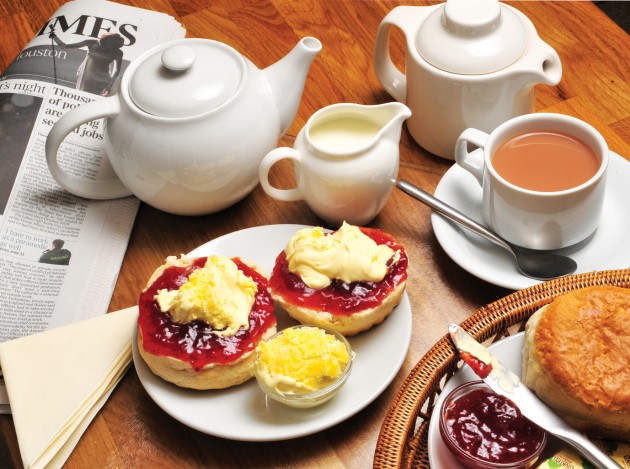THE LEVERSTOCK GREEN CHRONICLE
an in-depth history of one village in Hertfordshire UK.
Click to link to principle LG Chronicle web pages.
In 1926 an acre of land was purchased fronting Leverstock Green (now Leverstock Green Road) between The Crabtree & Cox Pond Farm, by George Frederick Sygrave (left) from his Uncle George Frederick Dell. (George Dell having purchased a larger parcel of land the same year, from the family of John Wells, Deceased.) The property later became known as The Bungalow, and its current address is 14 Leverstock Green Road. (NB. Why High Street Green was given on the business card is uncertain, as High Street Green didn’t (and still doesn’t) begin until what is now the junction with Adeyfield Road at the site of the old Saracen’s Head PH.
George Sygrave and his wife Ada, who at the time lived in Hemel Old Town in Herbert Street, initially cultivated the land for fruit and vegetable as well as rearing chickens, and George would cycle every morning from Herbert Street to the Leverstock Green property to feed the chickens before proceeding to Dickinson’s at Apsley where he worked in the Book Department, starting work at 6am. He fed the chickens whatever the weather.
In 1930 they had a bungalow built on the land, and moved into it as their family home. When George and Ada first moved in to the Bungalow the only utility service they had was running water. Gas and electricity not coming till much later in 1933 after the sale of the rest of the Cox Pond Farm estate to the Brock Firework Company. Prior to this they had to use oil lamps for lighting, cooking on a Triplex Range with a back boiler. Later they were to build a lean-to at the back of the bungalow which was used as an additional kitchen with a gas cooker and sink.
Eventually the couple opened tea-rooms on their premises in c.1935 after having built a couple of wooden huts within their grounds for the purpose. These had corrugated iron roofs and were fitted out with tables and benches and the larger hut heated by a Gurney Stove. The larger of the two huts was the one chiefly used for the tea rooms, and was used all year round with the smaller hut being used as an overflow at particularly busy times in the summer months.
LEFT:Ada Sygrave cutting her birthday cake in the Tea-Room with husband George.
RIGHT: Doris & William Sygrave with their dog,with the Tea Room behind them.
Ada Sygrave ran the tea rooms with help from other members of her family and occasionally one or two of her friends who were happy to help out. Entrance to the tea rooms was from Leverstock Green Road via the gate in the hedge. When open for business the gate would be taken off its hinges. In the summer tables and chairs were put out on the large lawn where they could enjoy the lovely gardens created by George Sygrave.
ABOVE: Ada & George in the garden at The Bungalow
RIGHT: Ada & George harvesting their Worcester Pearmain apples.(After 1974 when W/P developed.)
BELOW: Home grown Runner Beans.
The gardens covered a large area, so George was lucky to get help. Much of the produce from the garden was used in the tea-shop for home-made jams, chutneys, tarts, and cakes – all of which were home made by Ada with help from family members and friends. She used to make large tray-bakes of cake slices, as well as sponge and fruit cakes, and was well known for her flaky pastry Eccles cakes. The emphasis in the tea-rooms being very much on“Afternoon Teas”.
George Frederick Sygrave
Ada also made her own ice-cream which she both served in the tea-rooms and sold from the garden gate. The cream for the ice-cream, cream teas etc. came from Jimmy Edward’s farm opposite, and the ice was delivered each week by the Watford Ice Co. George even built his own small ice-house in the garden to store the ice in. The ice was delivered on Wednesdays and Ada made the ice-cream on Fridays and Saturdays.
The gardens were not just for produce, but for recreation and enjoyment. There were lots of roses and a large rockery, and it was altogether a very pretty garden. In the summer chairs and tables would be put out on the lawn, and those visiting the tea-rooms could sit outside. From the photos below it would appear that they enjoyed themselves on the lawn in the sunshine.
ABOVE AND RIGHT AND BELOW: Cycling Club members enjoying the gardens at No 14. Cycling Clubs, many from London, would book in advance. It was not unusual for there to be 50 or members of one of the north London Cycling Clubs at any one time visiting the Sygrave’s Tea Room. (Note the garden gate taken off its hinges!)
The tea-rooms eventually closed in the late 1950s as the Sygraves retired. The bungalow however remained in the family, being lived in today by George and Ada’s grandson and his wife. It is to Roger Sygrave that I am indebted for all the information contained in this article. 







 Barbara Chapman June 2015
Barbara Chapman June 2015
CAN YOU HELP?
If you or a member of your family can remember the Tea-Rooms, please get in touch with me and tell me your story. Also if you have any photographs taken at the Tea Rooms, I would love to see them, copy them for the archive, and if you agree post them here.
Many Thanks Barbara Chapman




